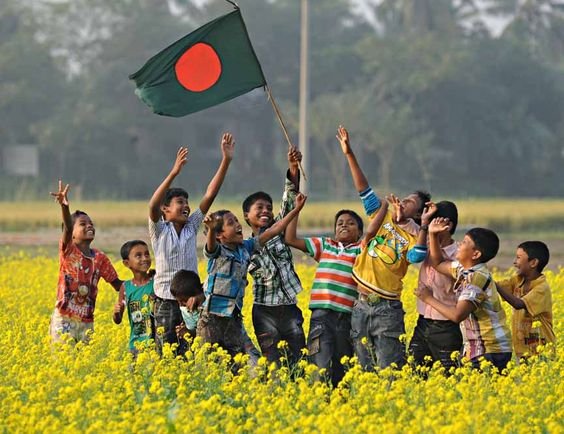
The recent student protests in Bangladesh have captured international attention due to their scale, intensity, and the significant impact they have had on the nation. Sparked by a contentious ruling on job quotas, these protests have evolved into a broader movement addressing systemic inequalities and government policies. This report delves into the background, developments, key events, government response, and the broader implications of these protests.
Background
The Quota System
Bangladesh’s job quota system has been a source of contention for decades. Initially established to favor specific groups, including descendants of the 1971 Liberation War veterans, women, people from underdeveloped districts, tribal communities, and persons with disabilities, the system reserved 56% of government jobs for these categories. This left only 44% available for general applicants, leading to widespread dissatisfaction among the broader population.
In 2018, sustained protests led by students and teachers demanded the abolition of these quotas, which they argued were unfair and discriminatory. The government initially responded by reducing the overall reservation to 10%, but dissatisfaction persisted. The protests subsided only after Prime Minister Sheikh Hasina announced the removal of all quotas later that year.
Recent Developments
In June 2024, the High Court Division of the Bangladesh Supreme Court reinstated the quotas, including the controversial 30% reservation for freedom fighters’ families. This ruling reignited student protests, which have since escalated into a nationwide movement demanding a complete overhaul of the quota system and broader government reforms.
Key Events
Initial Protests and Escalation
The protests began in Dhaka on June 5, 2024, immediately after the court’s ruling. Initially peaceful, the demonstrations quickly escalated as students from universities across the country joined in. The situation intensified after the Eid-ul-Adha festivities, with larger crowds and more confrontational tactics.
On July 7, a country-wide “Bangla Bandh” (shutdown) was called by the protesters, leading to widespread disruptions. Major highways and railway lines were blockaded, and educational institutions were closed indefinitely following violent clashes that resulted in multiple deaths and injuries.
Clashes and Violence
The protests turned violent on several occasions, particularly in clashes involving the Bangladesh Chhatra League (BCL), the student wing of the ruling Awami League, and the police. Reports indicate that BCL members and police attacked peaceful demonstrators, leading to severe injuries and fatalities. By mid-July, at least 39 people had been killed, including students, journalists, and police officers. Hundreds more were injured in these confrontations.
The use of tear gas, rubber bullets, and batons by the police, alongside aggressive tactics from BCL members armed with sticks, rocks, and Molotov cocktails, exacerbated the violence. These clashes disrupted daily life in major cities like Dhaka, Rajshahi, Khulna, and Chattogram, causing significant economic and social turmoil.
Government Response
The government’s response has been multifaceted, involving both attempts to quell the protests and defend the quota system. Prime Minister Hasina has emphasized the importance of honoring the sacrifices of the 1971 Liberation War veterans, a stance that resonates with a segment of the population but has done little to appease the protesters.
In an effort to control the situation, the government ordered the closure of all high schools, colleges, madrasahs, and polytechnic institutes under the Department of Secondary and Higher Secondary Education. Additionally, mobile internet services were suspended to disrupt the organization and communication among protesters.
Despite these measures, the protests have continued unabated, with students calling for a complete shutdown of the country and demanding immediate government action to address their grievances.
Broader Implications
Social and Political Impact
The student protests have highlighted deep-seated issues within Bangladeshi society, including systemic inequality and the perceived favoritism of certain groups. The reinstatement of the quota system has been seen by many as an attempt to consolidate political support among freedom fighter families, who are traditionally loyal to the ruling Awami League.
These protests have also exposed the fragility of Bangladesh’s political stability. The government’s heavy-handed response and the involvement of the BCL have drawn criticism both domestically and internationally, raising concerns about human rights and democratic governance in the country.
Economic Consequences
The economic impact of the protests has been significant. The shutdown of educational institutions and the blocking of major transportation routes have disrupted daily life and commerce. Industries that rely on a steady flow of goods and labor, such as manufacturing and retail, have been particularly hard-hit.
Furthermore, the uncertainty and violence have deterred foreign investment and tourism, which are crucial for Bangladesh’s economic growth. The prolonged unrest could lead to longer-term economic challenges if the situation is not resolved amicably.
International Reactions
The international community has responded with concern to the developments in Bangladesh. Organizations like Amnesty International have called on the Bangladeshi government to ensure the safety of peaceful protesters and respect human rights. The US State Department and other foreign governments have also condemned the violence and urged for a peaceful resolution.
India, Bangladesh’s neighboring country, has issued advisories for its citizens in Bangladesh and urged the Bangladeshi government to protect the rights and safety of all individuals, including foreign nationals.
The student protests in Bangladesh represent a critical juncture for the country, reflecting broader societal issues and challenging the current political landscape. The demand for a merit-based recruitment system and the abolition of discriminatory quotas is a call for greater equity and transparency in governance.
The government’s response to these protests will significantly shape the future political and social landscape of Bangladesh. Ensuring a peaceful resolution that addresses the legitimate concerns of the protesters while maintaining order is essential for the country’s stability and development.
Moving forward, it is imperative for the Bangladeshi government to engage in meaningful dialogue with the protesters, consider reforms that promote fairness and inclusivity, and uphold democratic principles to foster a more just and equitable society.
ALSO READ: Top 10 Business Opportunities in the United Kingdom





